Light, bright, and citrusy lemon loaf cake is the quintessential springtime dessert. Slice it to reveal a sunshine yellow hue and moist, tender crumb—and it comes together with just a few minutes of effort!
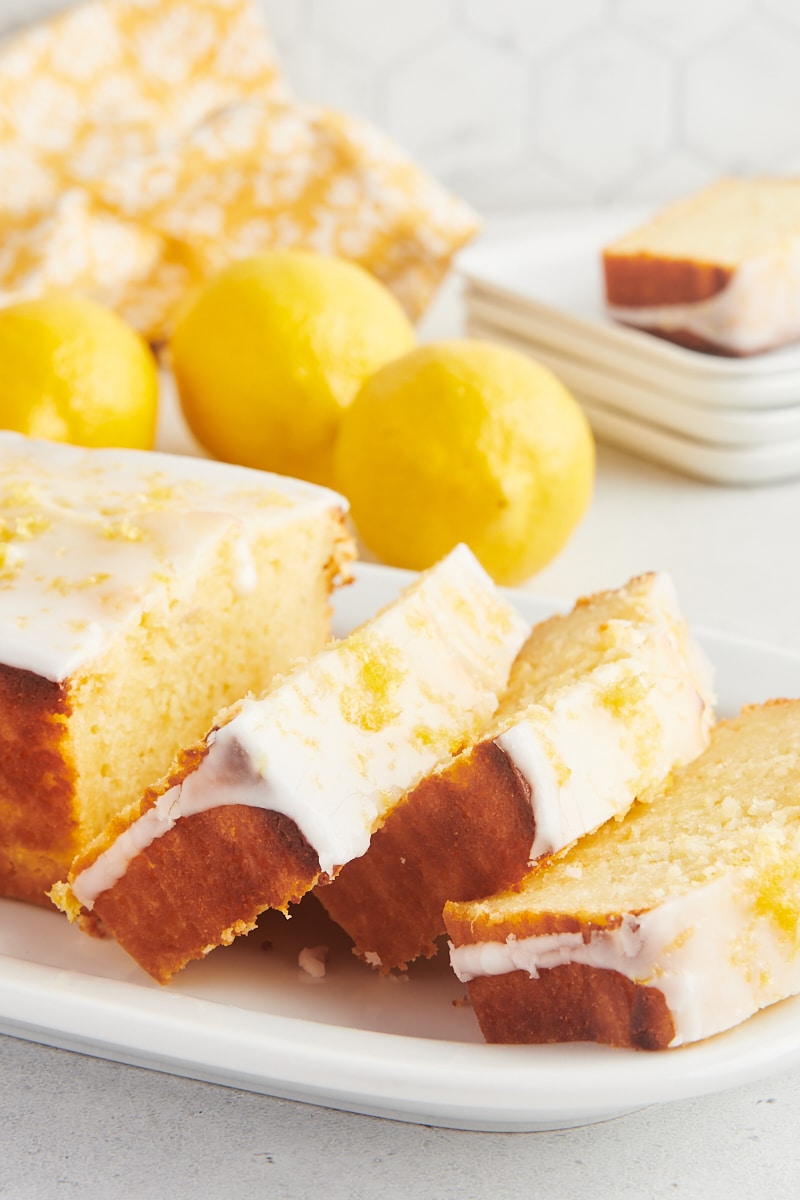
Loaf cakes are basically a gussied up version of quick bread—a little sweeter, without all the mix-ins, and usually served with a generous glaze or frosting, as is the case with this lemon loaf cake. If your go-to at Starbucks is a slice of iced lemon loaf with your morning latte, you’ll appreciate this bright, moist cake and the thick layer of lemony icing on top!
Why You’ll Love This Lemon Loaf Cake
- Better than Starbucks. With a sprinkle of fresh lemon zest on top, this lemon cake has extra citrus flavor, making it much zippier than the Starbucks version.
- Easy to make. This loaf cake is a simple recipe that can be made in just a few minutes with everyday ingredients, most of which you probably already have on hand.
- Perfect for springtime. The light, fresh lemon flavor of this cake makes it the perfect dessert for spring gatherings or brunches when you want something sweet, but not necessarily heavy and decadent. (I also love this lemon Bundt cake and lemon bars for similar reasons!)
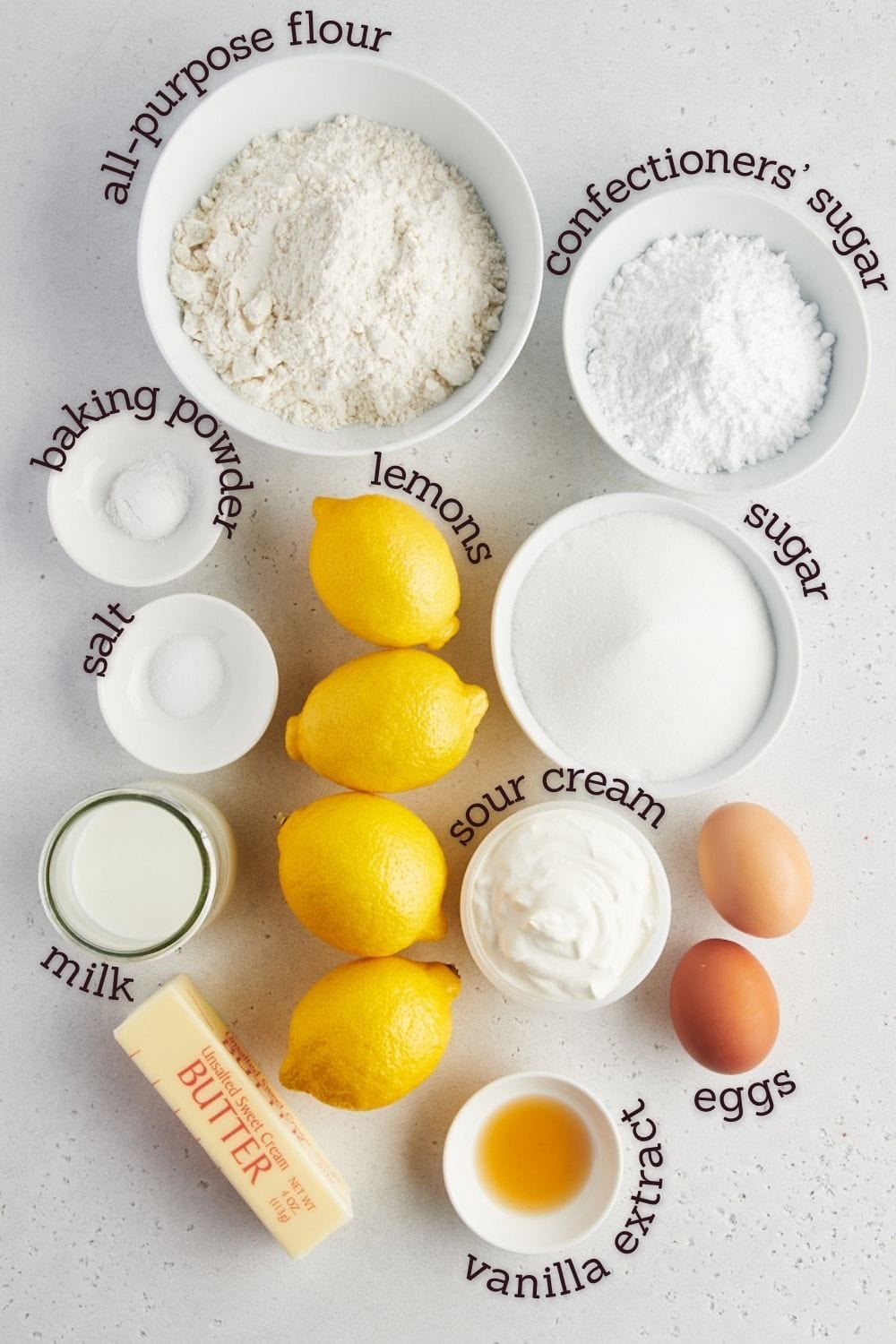
What You’ll Need
Scroll down to the recipe card to find the ingredient quantities and recipe instructions.
For the Cake:
- All-purpose flour – Learn how to measure flour for baking.
- Baking powder
- Salt
- Granulated sugar
- Lemons – You’ll need both the juice and the zest. Zest the lemons first, then juice them.
- Sour cream or plain yogurt – This helps give lemon loaf cake its supremely moist crumb.
- Milk – Whole milk is always my preferred choice for baking, as the extra fat makes baked goods more tender. That said, any milk you have on hand is fine.
- Unsalted butter – Unless a recipe says otherwise, unsalted butter is best for baking. Learn more: Unsalted or Salted Butter: Which is Better for Baking?
- Eggs
- Vanilla extract – Use a high-quality store-bought vanilla extract or make your own homemade vanilla extract.
For the Lemon Glaze:
- Confectioners’ sugar – Also known as powdered sugar.
- Lemon – Again, you’ll need both the juice and the zest.
What’s the Best Way to Zest Lemons?
A microplane grater or a fine zester is best for zesting lemons, as they allow you to remove only the outer skin of the lemon, which is where all the fragrant oils and flavor reside. Be careful to avoid the bitter white pith beneath. Learn more here: How to Zest and Juice Lemons
How to Make Lemon Loaf Cake
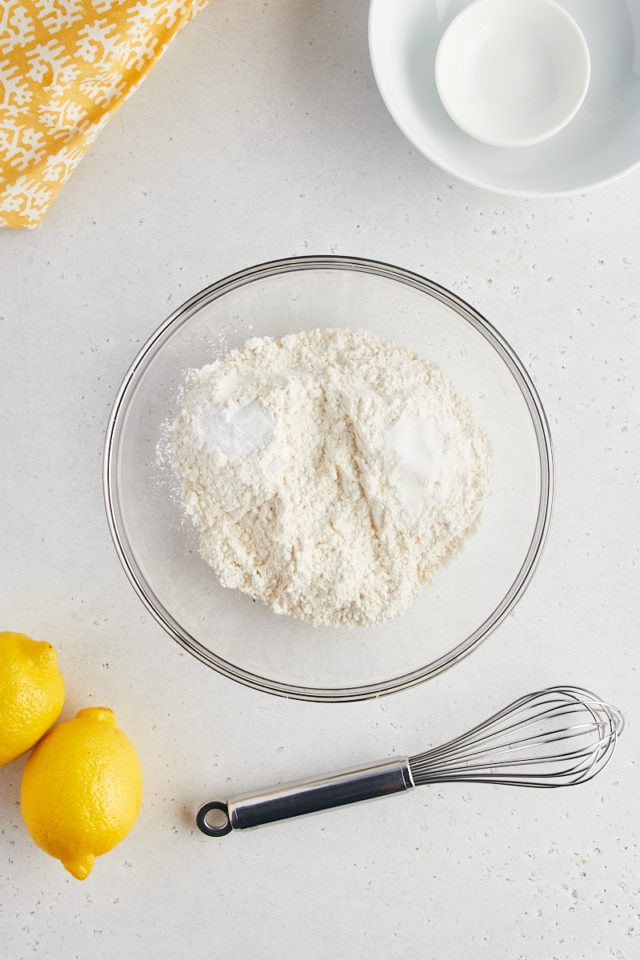
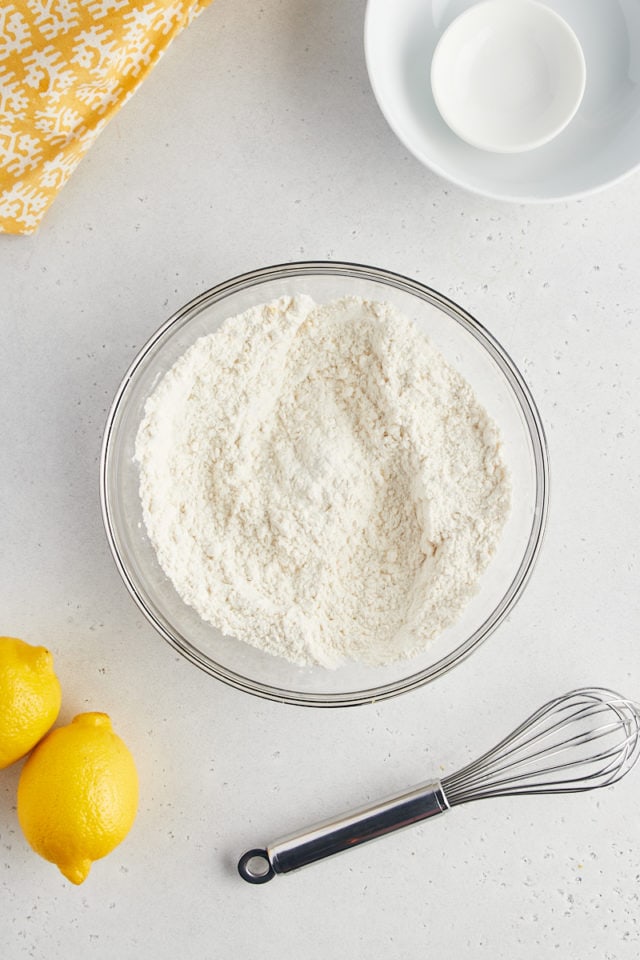
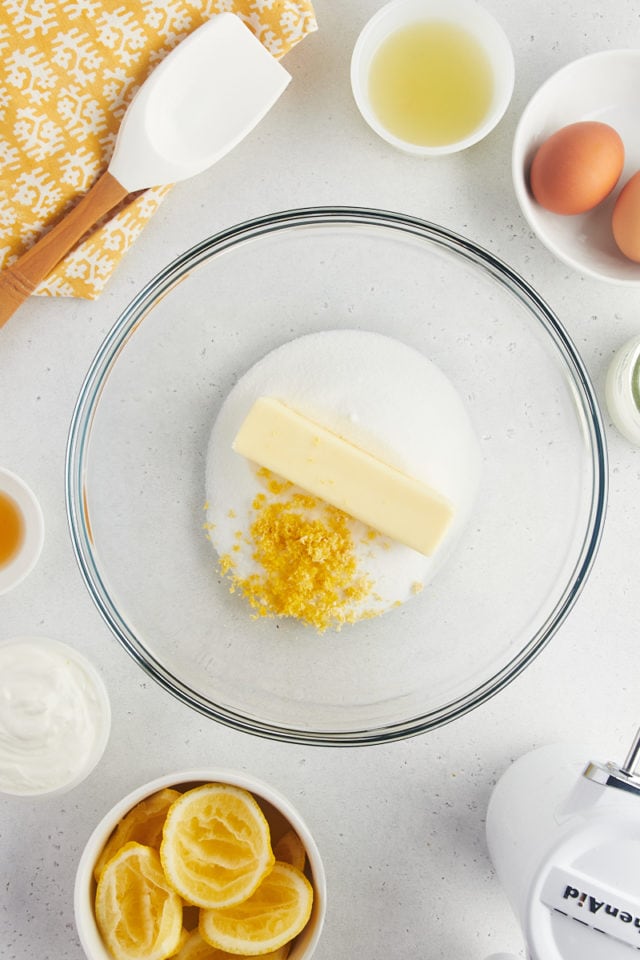



- Prepare. Preheat your oven to 350°F, then grease a loaf pan and lightly coat it with flour. If you prefer, you can first line the pan with parchment paper.
- Mix the dry ingredients. Whisk the flour, baking powder, and salt in a bowl.
- Cream the butter and sugar. Use an electric mixer on medium speed to beat the butter, sugar, and lemon zest until they’re light and fluffy.
- Finish mixing the wet ingredients. Beat in the eggs one at a time, followed by the lemon juice, vanilla extract, sour cream, and milk.
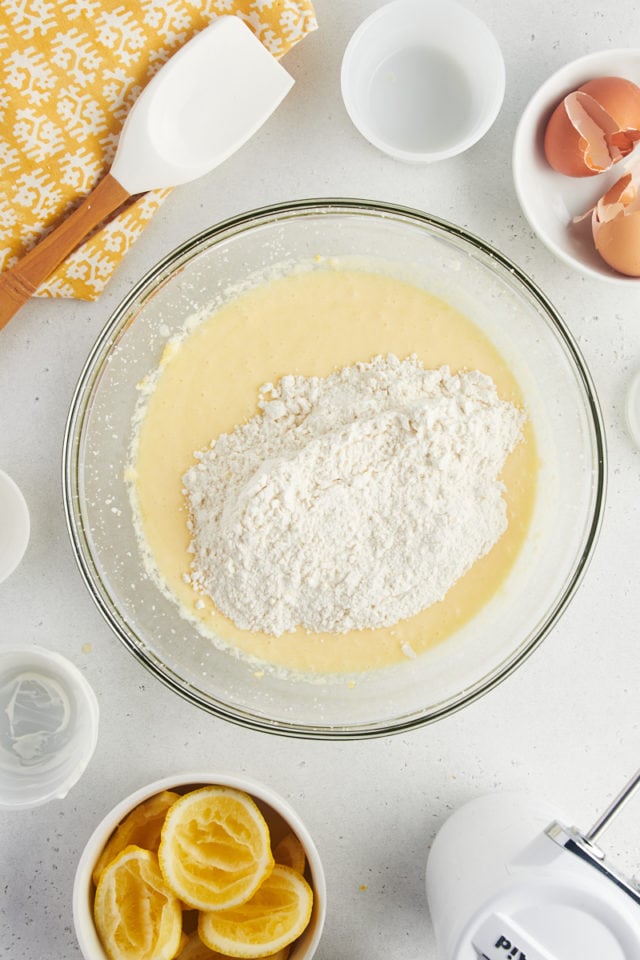
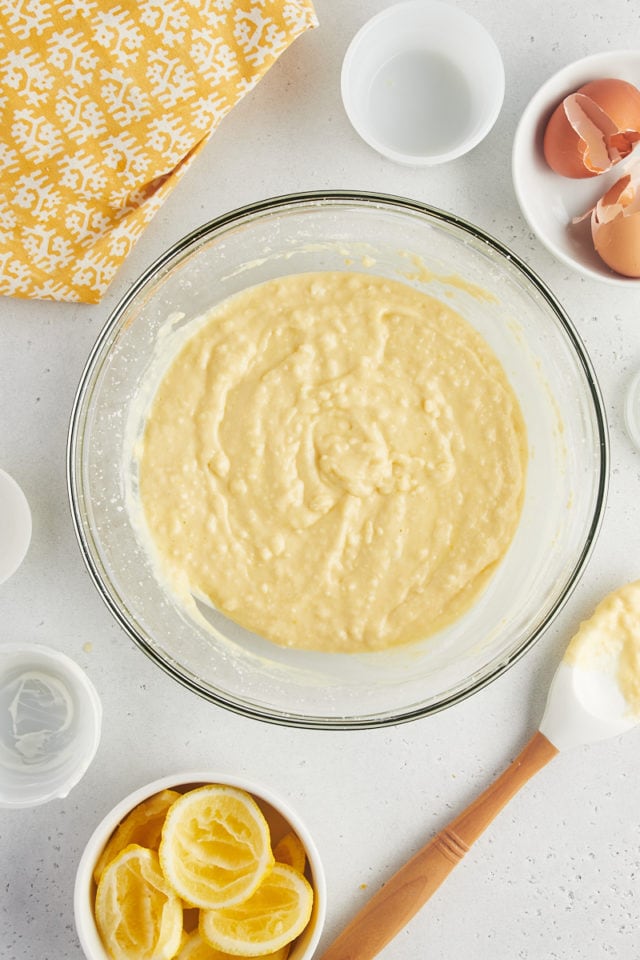
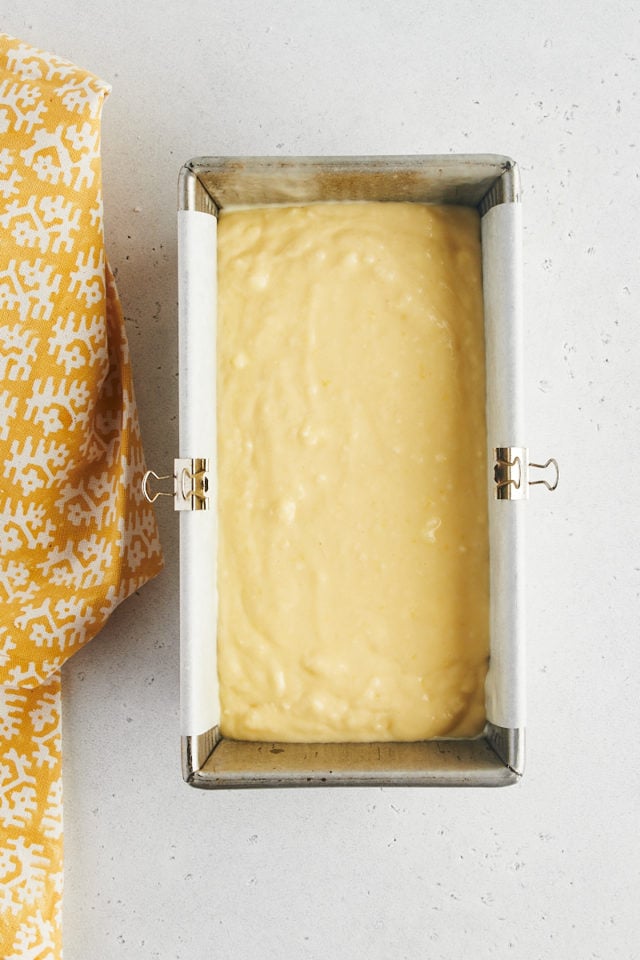
- Finish the batter. With the mixer on low speed, add the dry ingredients and mix just until combined.
- Bake. Pour the batter into the loaf pan and bake for 50 to 55 minutes, or until a toothpick inserted into the center comes out clean.
- Cool. Set the pan on a wire rack and allow the cake to cool for 10 minutes. Carefully transfer the lemon loaf cake onto the wire rack to finish cooling.
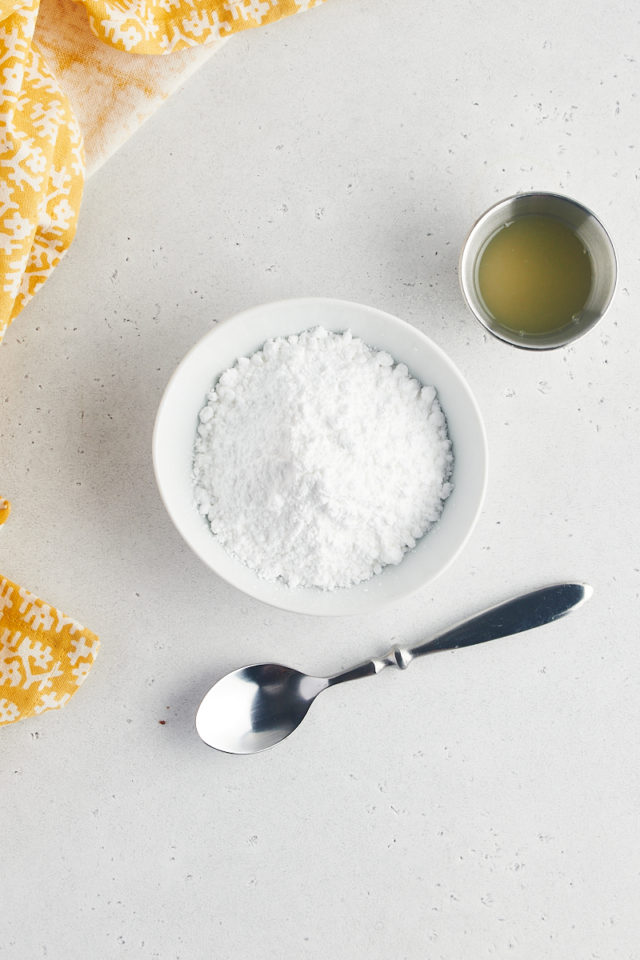
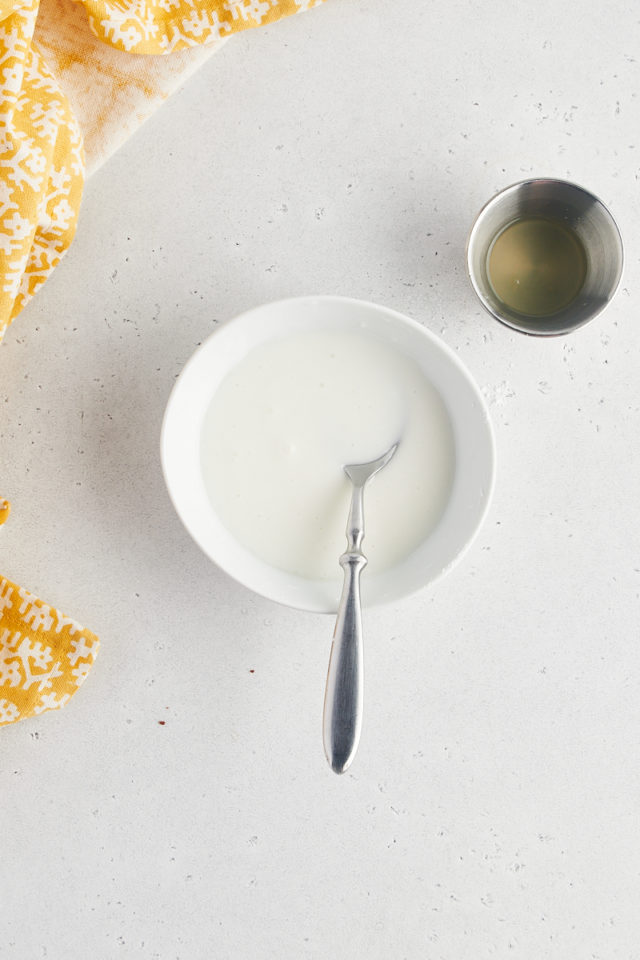
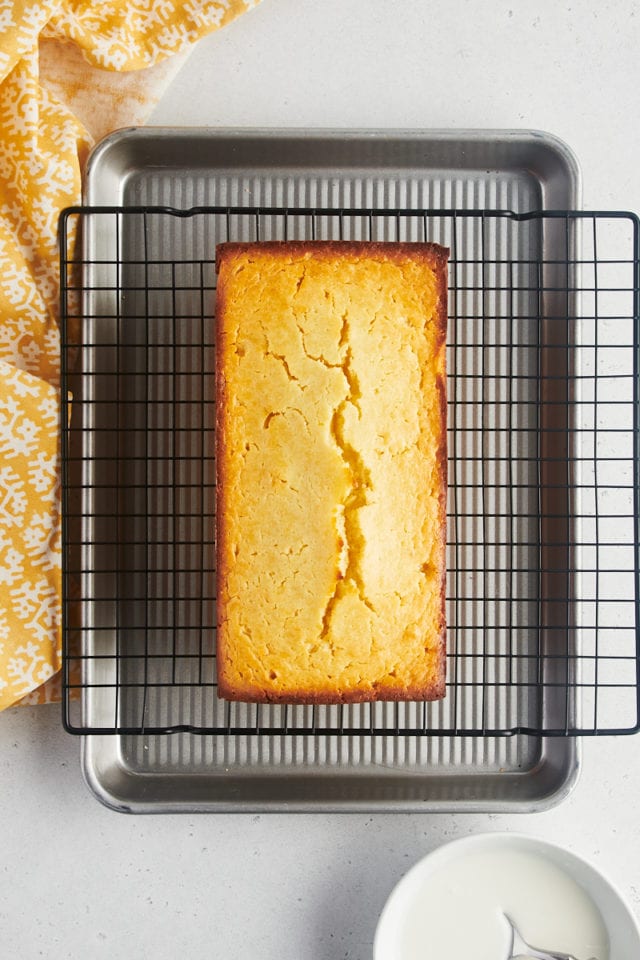
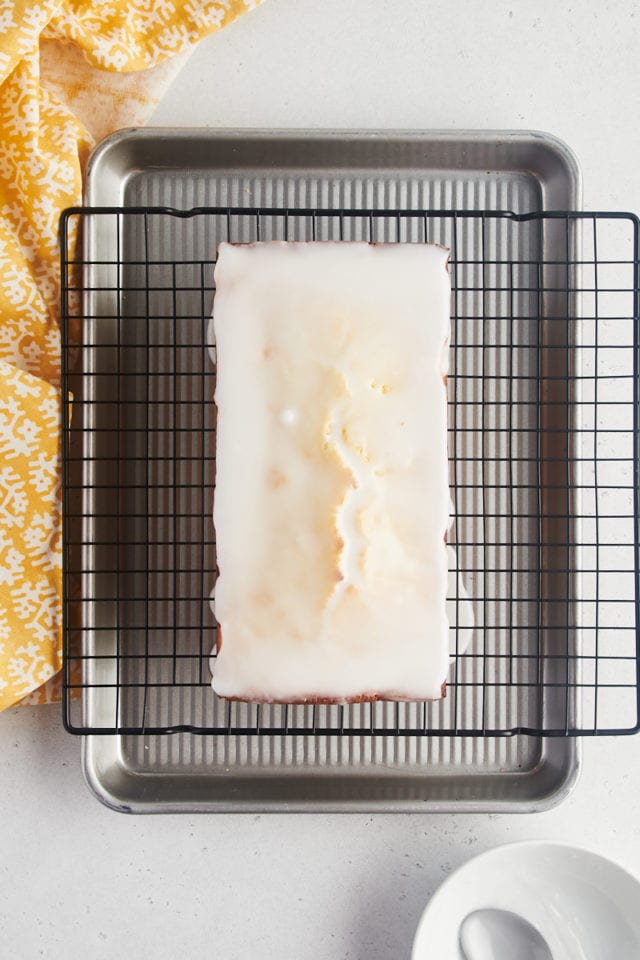
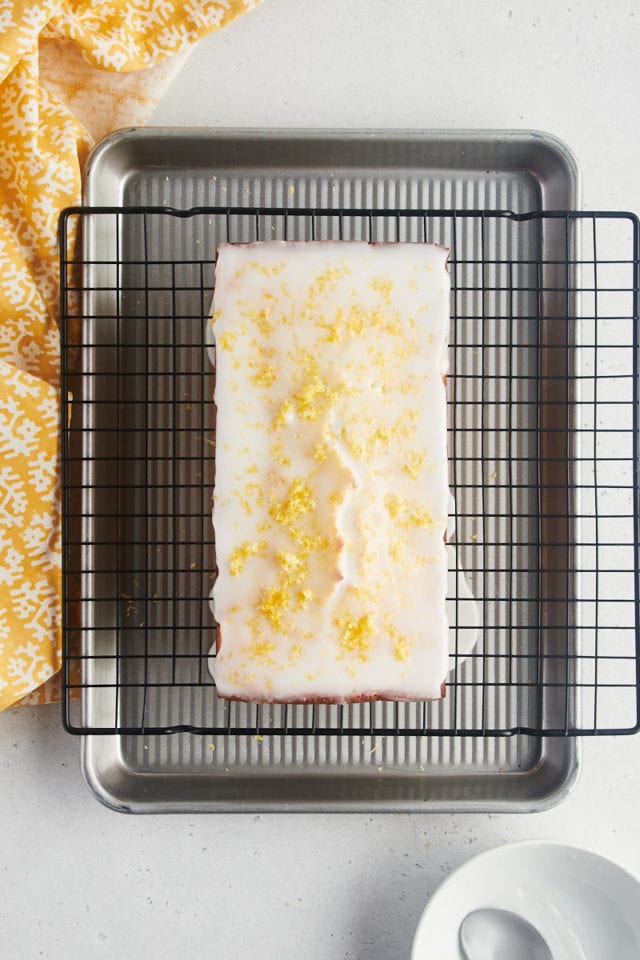
- Make the glaze. Whisk the confectioners’ sugar and 2 tablespoons of lemon juice. If needed, add more juice to reach a consistency that’s thick, but pourable.
- Finish. Drizzle the glaze over the cooled lemon loaf cake. Garnish with lemon zest, if desired. Let the glaze set before slicing and serving.
Tips for Success
- Use parchment paper for easy removal. It’s not absolutely necessary, but for best presentation and easiest removal, you can add parchment paper to the pan and then use it as a sling to pull the lemon loaf cake out of the pan to finish cooling.
- Soften the butter. To make creaming the butter and sugar easier, make sure your butter is almost to room temperature before starting the recipe. Learn more: How to Soften Butter
- Don’t over-mix. When adding the dry ingredients to the wet ingredients, mix gently and just until combined. Too much mixing can lead to a dense texture.
- Check for doneness. Ensure the loaf is baked until a toothpick inserted in the center comes out clean or with a few dry crumbs (not wet batter). If needed, extend the bake time by 5-10 minutes and tent with foil to prevent excessive browning.
- Sift the confectioners’ sugar. If your powdered sugar is lumpy, sift it before making the glaze to ensure a smooth consistency. It’s no fun picking lumps out of a glaze after you pour it onto a cake!
- Let the cake cool completely before glazing. Giving the cake time to cool will allow the glaze to set properly and not just melt into the warm loaf.
- Know the basics of baking. Read my baking tips for beginners to get started.
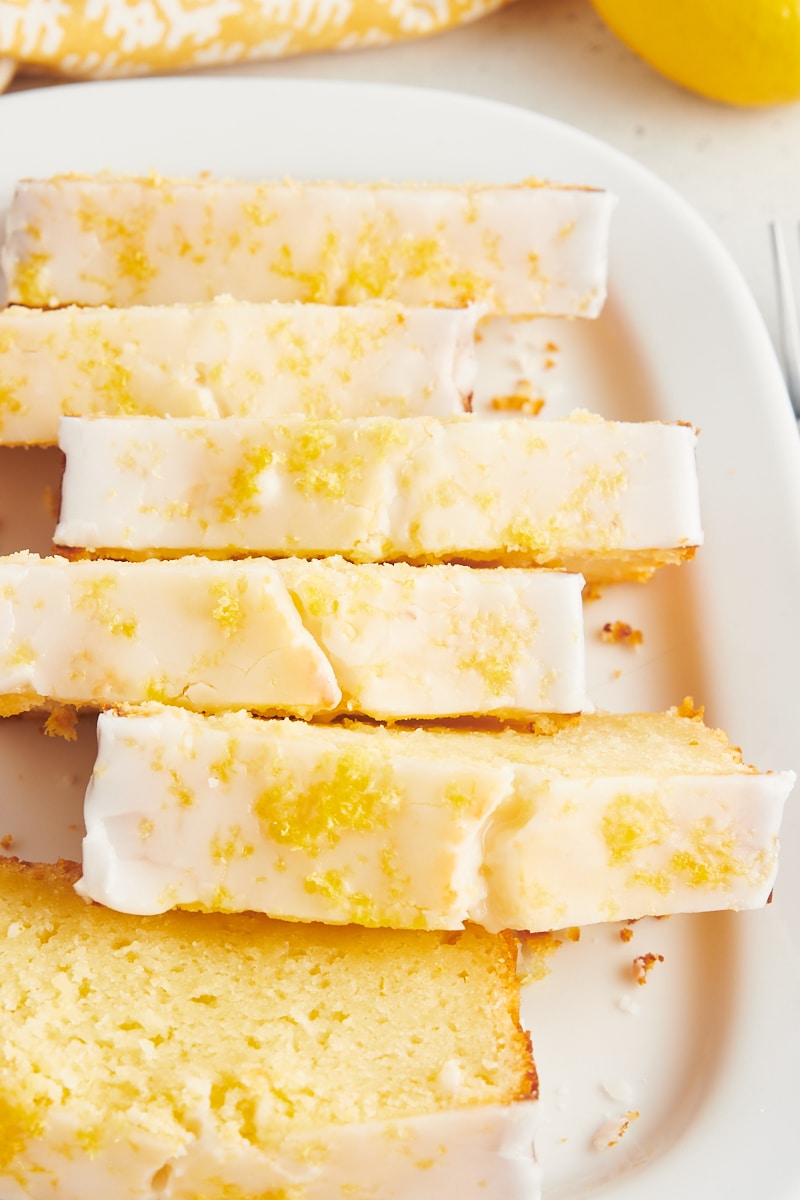
Variations
- Try Meyer lemons. When they’re in season, you can swap regular lemons for Meyer lemons, which have a slightly sweeter and more floral flavor.
- Add poppy seeds. For some extra texture and crunch, add 1 tablespoon of poppy seeds to the batter.
- Switch up the glaze. Instead of lemon juice, try using orange or lime juice for another layer of citrus flavor. Vanilla and almond extracts also pair nicely with lemon.
Serving Suggestions
For a more decadent treat, serve each slice with a dollop of whipped cream or a scoop of vanilla ice cream. I also like to scatter fresh berries over the slices for prettier presentation.

How to Store
If you plan on enjoying the cake within a few days after baking, you can simply keep it at room temperature. Wrap the lemon loaf cake loosely with plastic wrap to protect it from drying out. For longer storage, your lemon loaf cake can be kept in the refrigerator for up to a week.
Can I Freeze This Recipe?
Lemon loaf cake freezes beautifully. Wrap the whole cake or individual slices in a layer of plastic wrap followed by a layer of aluminum foil to prevent freezer burn, then freeze for up to 3 months.
When you’re ready to enjoy your cake, allow it to thaw overnight in the refrigerator, then bring it to room temperature before serving.

More Lemon Dessert Recipes
- Mini Lemon Cheesecakes
- Lemon Almond Butter Cake
- Raspberry Lemon Icebox Pie
- Lemon Coconut Sugar Cookies
- Lemon Cream Pie
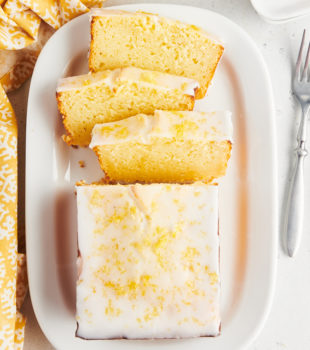
Lemon Loaf Cake
Ingredients
For the Cake:
- 1 ½ cups (180 g) all-purpose flour
- 1 teaspoon baking powder
- ½ teaspoon salt
- 1 cup (200 g) granulated sugar
- 2 tablespoons lemon zest, from about 2 lemons
- ¾ cup (170 g) sour cream or plain yogurt
- ¼ cup (60 ml) milk
- ½ cup (113 g) unsalted butter, softened
- 2 large eggs
- ¼ cup (60 ml) lemon juice, from 2 to 3 lemons
- 1 teaspoon vanilla extract
For the Lemon Glaze:
- 1 cup (110 g) confectioners’ sugar, sifted
- 2-3 tablespoons (30-45 ml) lemon juice, from 1 to 2 lemons
- lemon zest, for garnish (optional)
Recommended Products
Instructions
To make the cake:
- Preheat the oven to 350°F (175°C). Grease and flour a 9" x 5" inch loaf pan. For easy removal, you can first line the pan with parchment paper.
- Whisk together the flour, baking powder, and salt. Set aside.
- Using an electric mixer on medium speed, beat the butter, sugar, and lemon zest until light and fluffy.
- Add the eggs one at a time, then the lemon juice, vanilla extract, sour cream, and milk, mixing well.
- With the mixer on low speed, add the dry ingredients, mixing just until combined.
- Pour the batter into the prepared loaf pan. Bake for 50 to 55 minutes, or until a pick inserted into the center comes out clean.
- Place the pan on a wire rack and allow the cake to cool for 10 minutes. Then, remove the cake from the pan and allow it to cool completely on a wire rack.
To make the glaze:
- While the cake cools, whisk together the confectioners’ sugar and 2 tablespoons of lemon juice. Add more juice as needed to get the desired consistency. The glaze should be thick but pourable.
- Once the cake is completely cool, drizzle the glaze over the top. If you like, garnish the top of the cake with more lemon zest. Allow to set before serving.
Notes
- Store in an airtight container at room temperature up to 3 days or refrigerate up to a week.



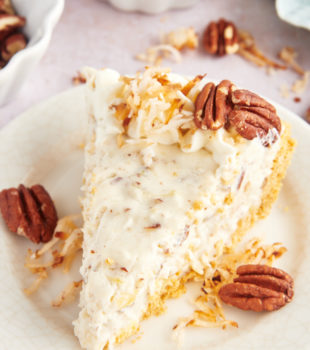
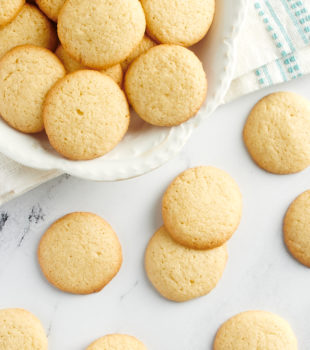



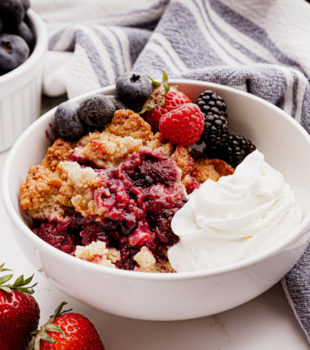
11 Comments on “Lemon Loaf Cake”
The instructions do not indicate when to add the milk. Should it be added with the lemon juice, vanilla and sour cream?
Hi, Judy! Yes, add it with those ingredients. I have fixed my omission in the recipe. Thanks!
Can you add blueberries with this recipe?
Hi, Gary! I’ve not tried that with this recipe, but I think that would work. Maybe a cup or so?
Can you use buttermilk in lieu of sour cream or plain yogurt and can you use 1/2 and 1/2 in lieu of whole milk?
Hi, Margie! I’ve not tried those substitutions in this recipe, so I can’t say with any certainty how well it would work. I think at the minimum it would affect the texture to some degree. Also, there’s no baking soda here to neutralize the acidity of the buttermilk, so you may get a more pronounced buttermilk flavor. If you decide to try it, let me know how it works.
They cake tastes absolutely delicious but its quite dense and the texture is not airy like most cakes. Is there any changes I could make to improve the texture a little bit? Other than that this is a great recipe!
Hi, Antonella! This cake is meant to have a dense texture, although if yours seemed overly so then it may be a matter of measurements or mixing. Be sure to measure accurately and try not to over-mix. If you’re looking for a lighter, fluffier lemon cake, you might try my lemon sheet cake.
Would this be good as muffins?
Hi, Julie! You could certainly do that. Just keep in mind that the texture of this cake isn’t like a quick bread, so you won’t get light, fluffy muffins. If you’re looking for a lemon muffin recipe, I recommend this one: Lemon Crumb Muffins.
I am a baker and this recipe didn’t work. I measure my ingredients. Have a scale. A thermometer and did not overmix yet it came out wet and gummy !! Disappointing to lose all quality ingredients to make this loaf cake. Please review recipe for accuracy as this seems to have too much liquid for ratio of flour. Wish it turned out !!